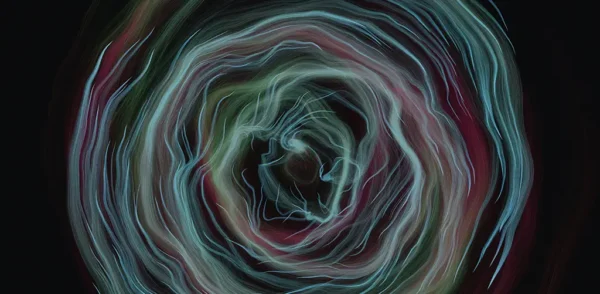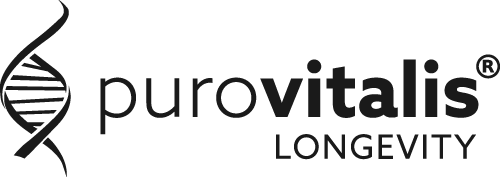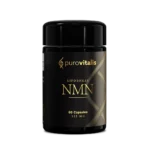
A recent study published in Aging Cell in 2025 offers detailed insight into what happens when cells lose their supply of NAD⁺, one of the body’s most essential molecules for energy and repair.
The researchers found, among other things, that when cells lose NAD⁺, they don’t just slow down — they activate a defense mechanism that mimics a viral infection, even though no virus is actually present.
table of contents
- How the researchers explored NAD⁺ loss
- What these findings mean
- Supporting NAD⁺ for cellular balance
How the researchers explored NAD⁺ loss
To study this process, scientists grew fibroblast cells which is a common type of connective tissue cell, for 14 days in an environment without nicotinamide.
What is Nicotinamide?
Nicotinamide which also goes under the name NAM is a form of vitamin B3 that the body uses to produce NAD⁺ — a vital molecule involved in energy production and cellular repair.
Throughout the experiment, they measured:
- Mitochondrial energy production
- Oxidative stress and antioxidant activity
- Gene expression related to immunity
- Changes in mitochondrial DNA (mtDNA) location within the cell.
Related: What is NAD+: A vital molecule for health and longevity.
The purpose of the study
The goal was to understand how cells adapt—or fail to adapt—under chronic NAD⁺ depletion. The researchers aimed to see how the loss of this vital molecule affected energy production, stress response, and communication between mitochondria and the rest of the cell.
Let’s take a closer look at what they discovered once the cells began running low on NAD⁺.
Cells survived — but on minimal energy
After just two days without nicotinamide, the cells’ NAD⁺ levels fell to less than 5% of normal. Even so, the cells didn’t die — they managed to survive and keep dividing, but much more slowly. This shows that fibroblast cells can stay alive with very low NAD⁺, but they lose their ability to adapt and produce energy efficiently.
Mitochondria lost their flexibility
The mitochondria — the parts of the cell responsible for producing energy — could still create a basic amount of energy, but they lost the ability to increase production when the cell needed more. In other words, their “energy reserve” was almost gone. Both their extra capacity and their maximum performance dropped sharply. When nicotinamide was added back, the mitochondria quickly recovered, showing that NAD⁺ is essential for keeping the cell’s energy system running efficiently.

Rising oxidative stress
Cells with low NAD⁺ showed clear signs of oxidative stress — a state where harmful molecules build up faster than the cell can remove them. This creates internal strain and slowly damages important cell components.
The researchers found that signs of damage increased, while the cells’ natural defense system became weaker. Normally, protective enzymes would become more active to neutralize stress, but in this case, they stayed inactive.
In other words
The cells were producing more damaging molecules than they could neutralize. Their internal “clean-up crew” wasn’t responding, which left them more exposed to wear and tear — a process closely tied to aging and disease.
Mitochondrial DNA escaped into the cytoplasm
One of the most striking discoveries was that mitochondria began leaking their own DNA into the surrounding cytoplasm.
Normally, mitochondrial DNA stays safely locked inside the mitochondria. But when NAD⁺ levels dropped, small fragments leaked out into the cell. The cell mistook this as a sign of infection and activated its internal alarm system — known as the cGAS-STING pathway.
This system usually reacts to viruses by turning on immune genes that produce protective molecules called interferons. In this case, though, no virus was present. The cells were simply responding to their own escaped DNA, creating a virus-like inflammatory reaction without any actual infection.
The cGAS-STING Pathway
A built-in alarm system in cells that detects misplaced DNA. When activated, it triggers an immune response to protect against viruses — but it can also switch on during internal stress or mitochondrial damage.
VDAC1: The gate that let the DNA out
The protein VDAC1 sits in the outer layer of the mitochondria and works like a tiny gate that controls what passes in and out. When NAD⁺ levels dropped, this gate opened and let small pieces of mitochondrial DNA escape into the rest of the cell.
When scientists blocked the gate using a compound called VBIT-4, both the DNA leakage and the immune reaction stopped.
This shows that VDAC1 is the key link between low NAD⁺, unstable mitochondria, and inflammation.
The reaction could be reversed
When the scientists restored NAD⁺ by adding nicotinamide (NAM), NMN, or nicotinamide riboside (NR), the cells regained balance. Mitochondria stabilized, oxidative stress decreased, and the antiviral-like immune activation disappeared. The effect was fully reversible and directly dependent on NAD⁺ availability.
Overview
| Observation | Effect |
|---|---|
| Low NAD⁺ levels | Triggered a virus-like immune response even without infection |
| Mitochondrial protein VDAC1 | Allowed mitochondrial DNA to leak into the cell |
| Blocking VDAC1 or restoring NAD⁺ | Stopped inflammation and stabilized cell function |
| Restoring NAD⁺ (via NAM, NMN, or NR) | Reversed all negative effects and restored balance |
What these findings mean
The study shows that when NAD⁺ levels drop, cells don’t just slow their activity — they trigger a false alarm. Mitochondria start leaking small pieces of DNA through a gate protein called VDAC1, which makes the cell believe it’s under viral attack. This activates an unnecessary immune response. When scientists either restored NAD⁺ or blocked the gate, this reaction stopped, and the cells returned to normal.
Although the research was done in cell cultures, it offers a possible explanation for why NAD⁺ levels decline with age and how this could contribute to the slow, chronic inflammation often seen in aging tissues. The findings reveal how closely our energy metabolism, mitochondrial stability, and immune balance are linked.
Supporting NAD⁺ for cellular balance
When NAD⁺ levels were restored, all harmful reactions subsided — showing how essential healthy NAD⁺ metabolism is for cell stability. NAD⁺ levels can be supported through nutrition, physical activity, and precursors such as NMN or NR, which the body converts back into NAD⁺.
Seen in the light of this study, maintaining NAD⁺ through smart supplementation isn’t just about boosting energy — it’s about helping cells stay resilient, balanced, and protected as we age.
Related: 7 NAD+ Precursors: What they are, how they work, and which ones look most effective.
Disclaimer
This blog is based exclusively on the scientific findings published in Aging Cell (2025). Purovitalis does not make any product or health claims related to this study. The goal is to communicate the research in an evidence-based and easy-to-understand way, so readers can learn from the scientific data itself.
References
- Chini CC, Camacho-Pereira E, Liu L, et al. Chronic cellular NAD depletion activates a viral infection-like interferon response through mitochondrial DNA leakage. Aging Cell. 2025;24(9):e135
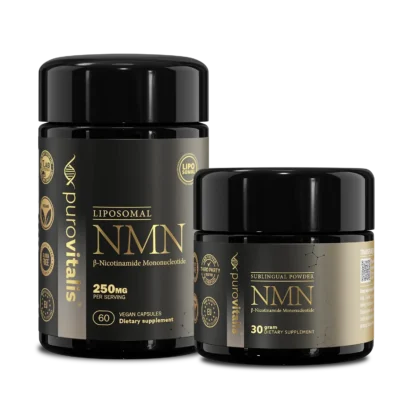
NMN supplements Europe based Liposomal delivery
Our NMN supplements are here for you to help you shine and feel your best! Try it out!
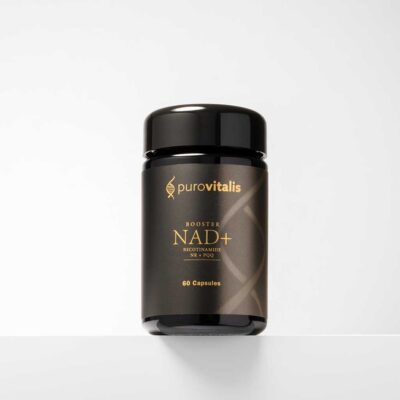
Boost Your NAD Levels Now
Discover our premium NAD+ booster and enhance your vitality.
